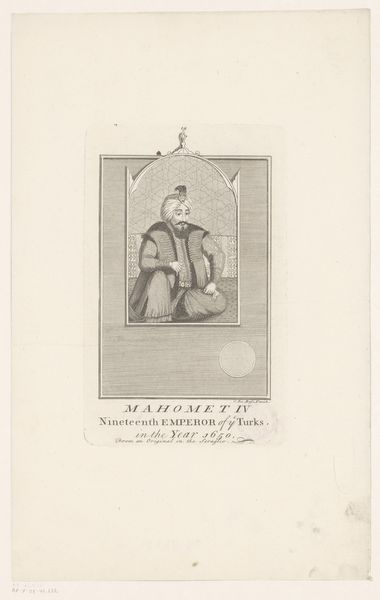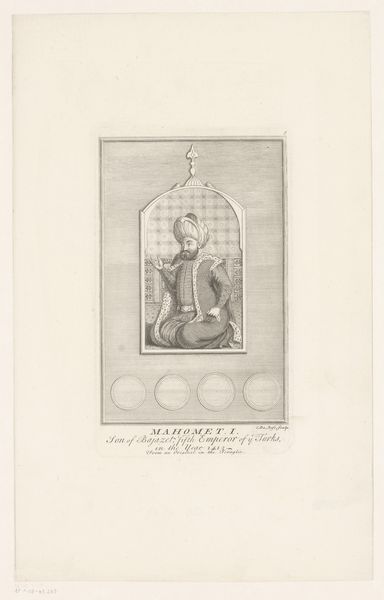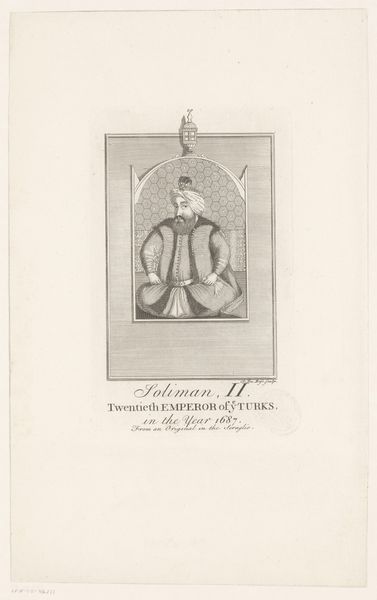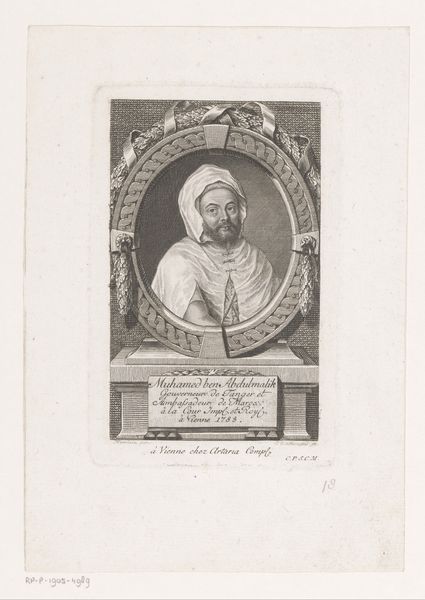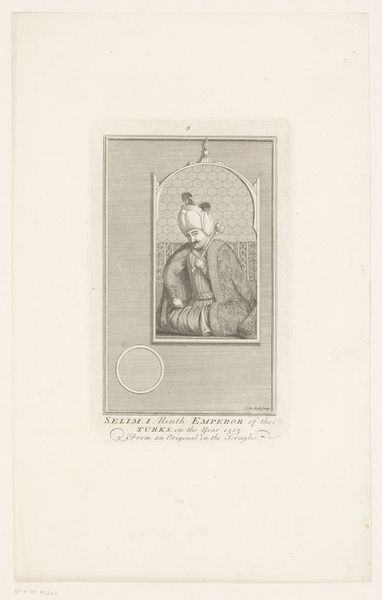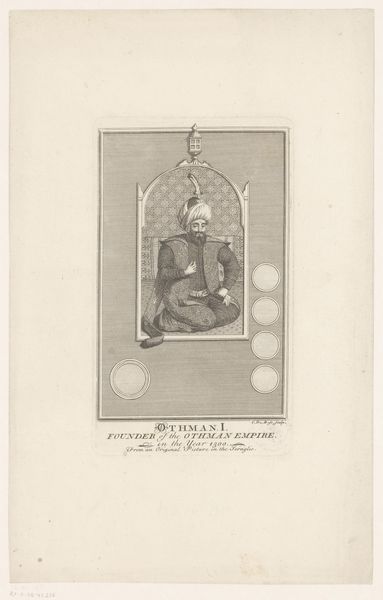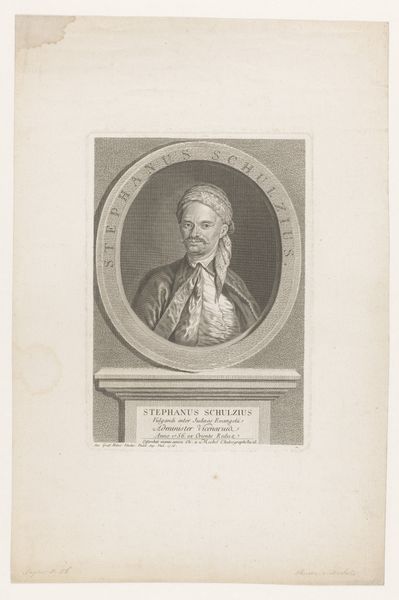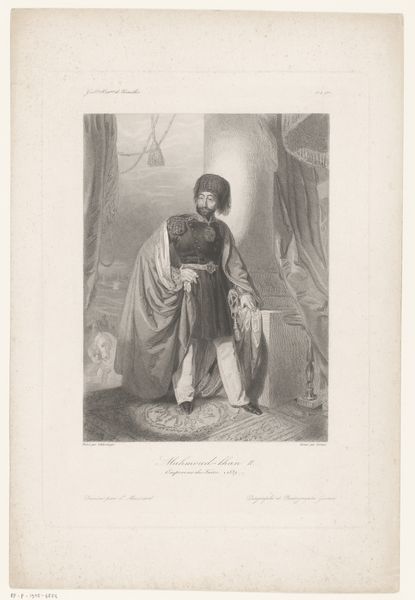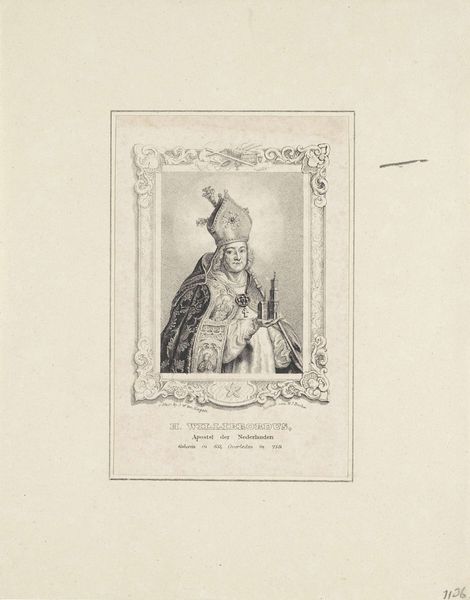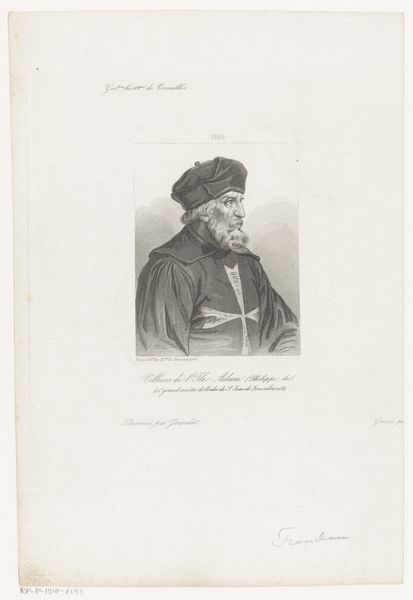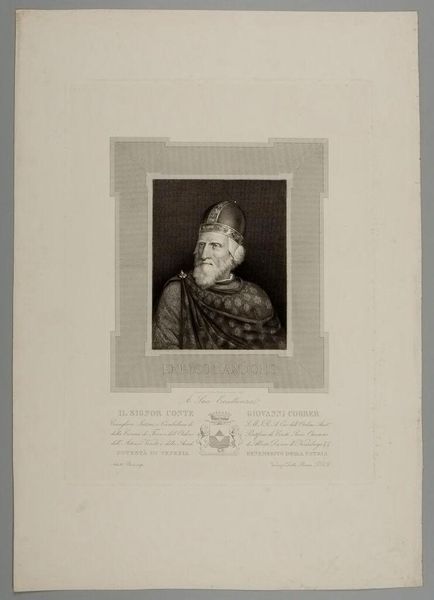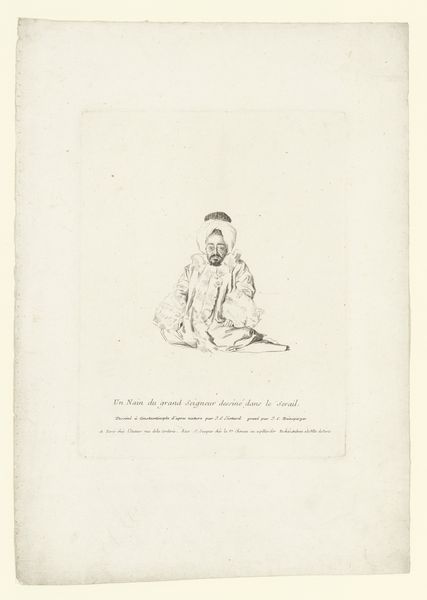
print, engraving
#
portrait
# print
#
islamic-art
#
history-painting
#
engraving
Dimensions: height 196 mm, width 122 mm
Copyright: Rijks Museum: Open Domain
Editor: Here we have a print, likely an engraving, titled "Portret van Fatih sultan Mehmet II," dating sometime between 1692 and 1745, attributed to Claude DuBosc. I'm struck by how this image, made using relatively accessible printing methods, attempts to capture the likeness of a powerful sultan from centuries earlier. What do you see in this piece, considering its means of production? Curator: It’s fascinating how the materiality of this print – the paper, the ink, the very process of engraving – transforms Mehmet II, Fatih Sultan Mehmed. The choice of printmaking makes this portrait accessible to a wider audience, removing it from the exclusive realm of painted portraits commissioned by the elite. Consider the labour involved, the artisan carefully etching the image, mediated by the existing painting ("From an Original in the Seraglio", the caption says). Is this act then one of democratization or perhaps, more insidiously, appropriation? Editor: Appropriation is an interesting idea. The caption makes a claim to authenticity. So the print’s value, at least partly, comes from its link to the original source painting? Curator: Exactly! Its value is intimately linked to this perceived authenticity, this claim to the ‘original in the Seraglio’ suggesting it’s the result of faithful reproduction rather than creative imagining. And how does this ‘reproduction’ become a commodity? The print’s function here is not just commemorative or informative; it’s deeply embedded in circuits of production and consumption. Editor: So it is transforming history into a good available to buy. It makes me consider the role the printing plays, not just for disseminating information but for turning important events into products for distribution. Curator: Precisely. By focusing on these elements, the tools, the hands, the commerce surrounding this seemingly straightforward portrait, we gain access into much broader understandings about power and historical representation. Editor: I never really considered how much of an artwork's significance can be tied to the labor and economics behind it. Curator: Considering the materials and their manipulation often leads to a deeper insight of both the work, its historical role, and, ultimately, its value.
Comments
No comments
Be the first to comment and join the conversation on the ultimate creative platform.
